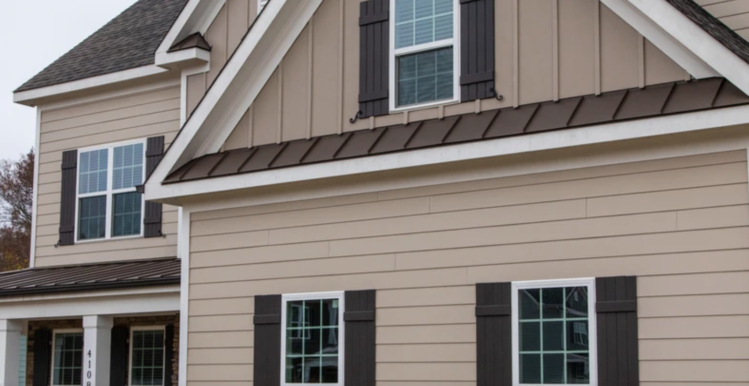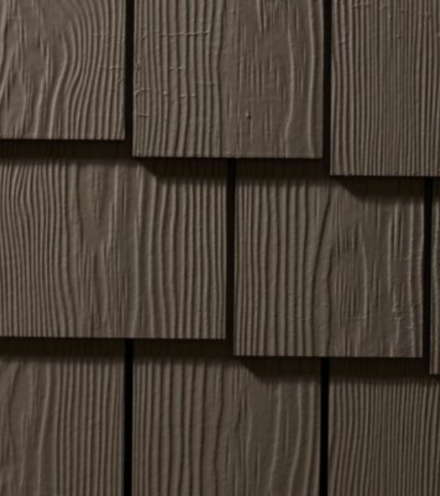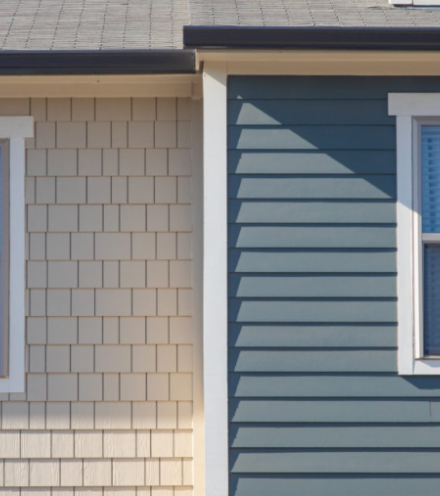
Your home’s siding says a lot about the property, from how well it's maintained to what it’s style and appearance is, and part of that style and appearance comes from the texture of your siding.
Just as there are many materials for siding, there are also many different textures. Sometimes, the material that you choose will play a role in that texture, such as brick or stone. Other times, you may have a choice, such as wood that’s been sanded smooth or left with a more rustic surface.
There are also materials that can give you a full range of styles and textures, such as fiber cement. Due to the way that fiber cement siding is created, it can take on the texture and appearance of many different materials from smooth and sleek to rough and rustic. The key to choosing the right one comes from your home’s architecture and your design goals.
1. Traditional Wood Grain

Wood grain is one of the most common siding textures - it can be found on wood, engineered wood, vinyl, aluminum, steel, and fiber cement. Done well, it can give the look of natural texture and style to your home. Wood grain works well on homes that have a traditional appearance, and need a little extra depth to the siding. For example, Victorians have a lot of decorative trim and look their best with a wood grain siding which can blend a little better with the other trim.
Craftsman homes, bungalows, ranches, and Colonials all look their best when they feature a wood grain texture on their siding as well.
2. Wood Shakes

For homes that need even more texture, as well as a more rustic appearance, wood shake siding is a good option. This siding has a more pronounced texture to it than wood grain lap siding or board and batten siding. The surface is more irregular, and you can choose from a straight or irregular edge as well, to control the appearance of the siding.
This is a good choice for cottages, rural homes, and for using as an accent on any home that needs a little more interest and depth than an ordinary siding can bring.
3. Smooth Lap

Lap siding comes in several styles including Dutch lap and clapboard, and it’s favored for most traditional styles of architecture including Mission, Colonial, ranch, and Federal. It comes in both wood grain and smooth textures, which is a plus for some homes where you want to create a slightly more up-to-date appearance or a more transitional look.
Smooth lap siding has no grain to it; each board is completely smooth and textureless, which makes it a good fit for properties that already have a lot going on. For example, if you have bold colors, accent siding, or decorative accents and shutters, smooth lap siding creates a quiet backdrop that complements without competing. It’s also a good choice for homes in more urban and suburban settings that don’t need the more rustic texture of traditional wood grain.
4. Board and Batten

The boards used in board and batten siding can be either smooth or wood textured depending on your preference. It’s important to note, however, that no matter what type of surface the boards have, board and batten siding tends to have its own unique texture created by the appearance of the battens, or the thin strips fastened over the seams between the boards.
Board and batten siding is one of the oldest forms of siding used in the United States, and it brings history, distinction, and interest to any home. Choose a wood grain textured board to create a rustic appearance or opt for a smooth board to get a more up-to-date look for your home.
5. Smooth Panels

If you have a modern or contemporary home, then smooth panels may be the right choice for cladding the exterior. Smooth panels have fewer lines and considerably less texture than any other material. This creates a sleek contemporary appearance that is ideal for modern homes. The panels are surrounded by a channel that can be color matched for a subtle look or that can stand out, such as using a metallic channel surrounding a boldly colored panel. The smooth texture of the panels can take color well, so you can show off your home in style.
6. Stucco

There are actually many different textures with stucco depending on the type of stucco, the pattern, and the aggregate used. Most people are familiar with the more traditional textures, however, which can be rough and have a visible depth to them. Stucco is a good look for many styles of home including Mediterranian and Southwest, as well as some more modern styles. Stucco can be used to give homes a more subtle all-over texture with smoother planes than shingles or lap siding, so it can also make a more transitional design as well.
Get the Right Fit
Pay attention to your home’s architecture and style, as well as its location when choosing your siding and its texture. Siding can add a lot of style and dimension to a home, allowing you to get the look you’re after.
And whether you’re looking for something in wood grain or something smooth, make sure to consider fiber cement from Allura. Not only do we have multiple textures to choose from, but our trim is also double-sided, so you can use it with a wood grain texture or completely smooth allowing you to complete the look for your ideal exterior.
Contact an expert at Allura today for more information on fiber cement textures.




